簡單回顧
在前幾章,我們從什麼是機器學習,機器學習的架構(given dataset D -> find H -> get g),及了解什麼是classification。這個章節會介紹什麼是Perceptron Learning Algorithm(PLA),並且實作binary classification。
Perceptron
以銀行發放信用卡為例,由下面圖中可以得知,xi代表的是客戶的資特徵值,也就是會對結果造成影響的參數,在這裡指的是age、annual salary…,但是每個特徵值對結果影響的比重都不一樣,可能annual salary比age影響來的大,所以給它的wi也比較大,這個wi我們稱為權重(weight)。
在計算完所有的特徵值之後,算出來的值必須超過某個門檻值,銀行才能決定是否發放信用卡給客戶(就像在學校考試,有作業成績,期中考,期末考,可能期中期末的比重較重,那教授要不要把你當掉,當然就是看學期平均是否有高過門檻值囉)這個門檻值就是threshold。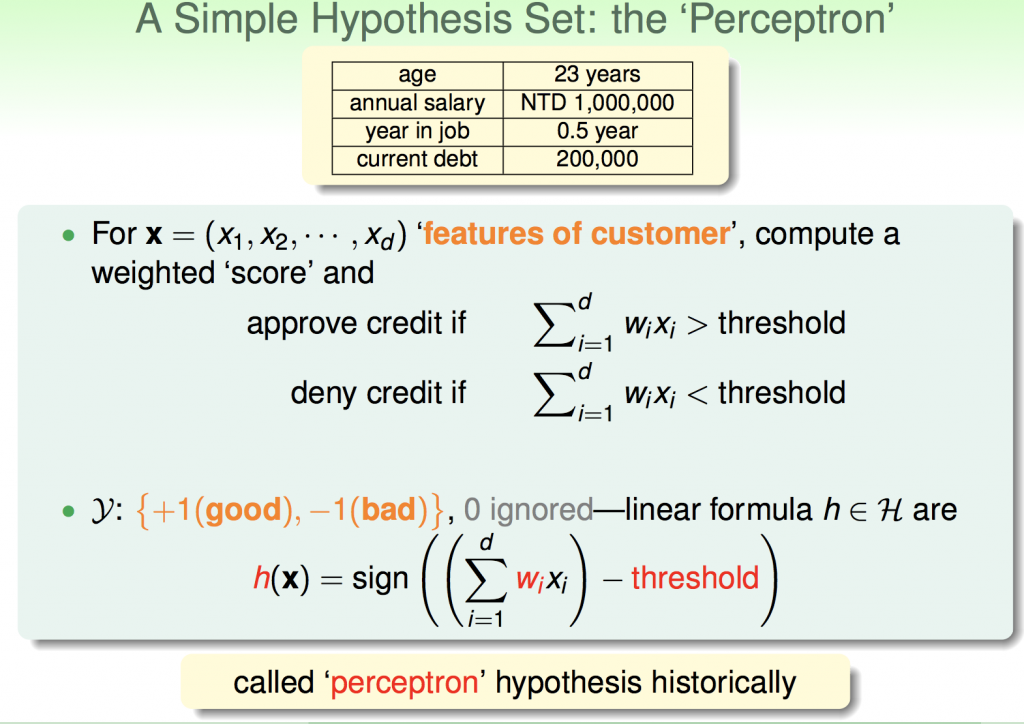
其實theshold也可以看成是線性組合的一部分,如下圖所示,可以把theshold也做合併,式子看起來比較簡短。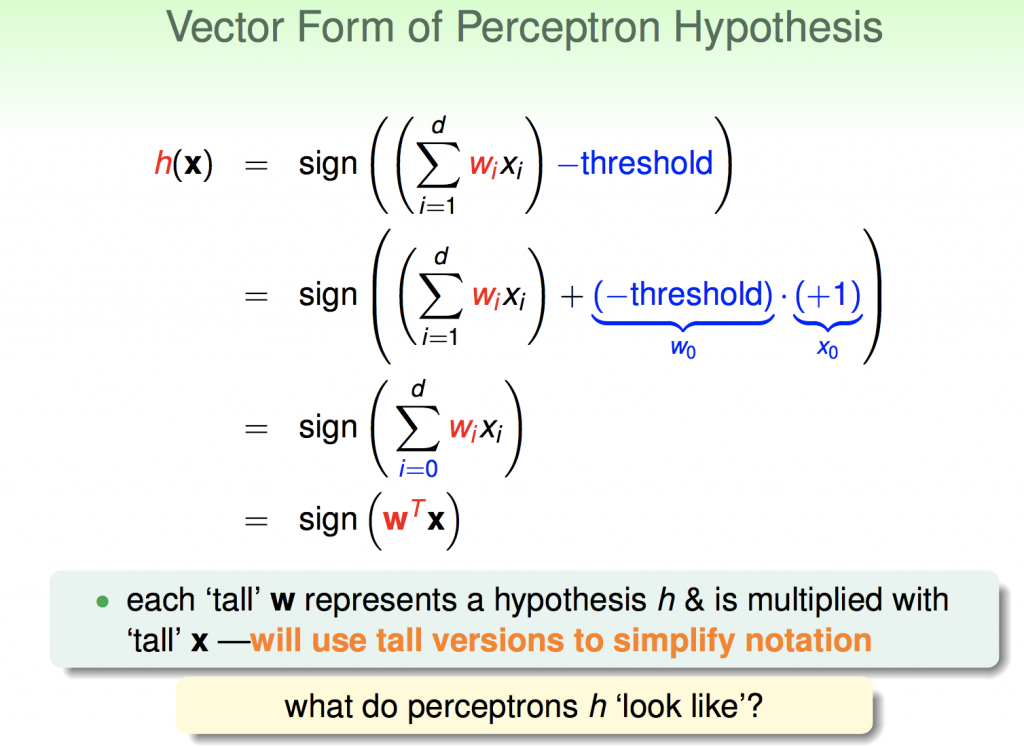
我們可以把這個抽象的數學式子變成具體的圖像,在這邊我們可以把資料代入h(x),如果結果>0就以藍色o表示;反之,<0就以紅色x表示,在這個二維平面上存在許多h(x),而每一個h(x)都能形成一條直線來分類資料,如果能找到一個h(x),能完美的分割所有資料,這就是所謂的分類,而Perceptrons就是一種線性分類器。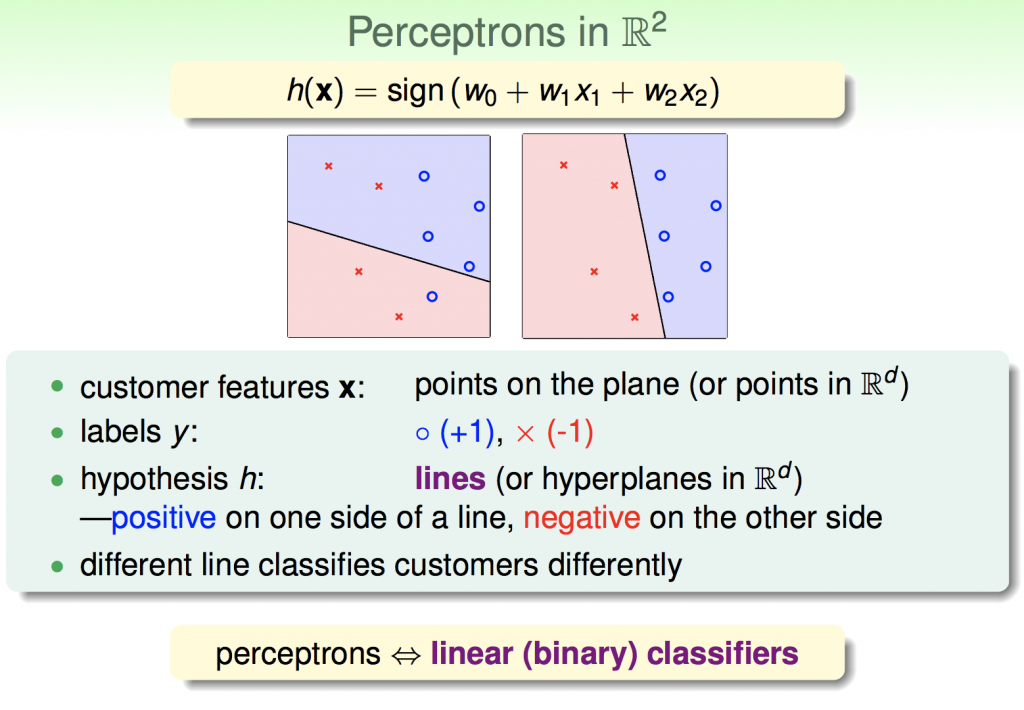
Perceptron Learning Algorithm
在這個二維平面上存在無限多條直線,那要如何選擇一條線可以完美分類我們的資料?最簡單的做法就是,先隨機選擇一條直線(假設h=w0 * x),然後不段的修正它,直到這條直線可我完整地分類所有資料。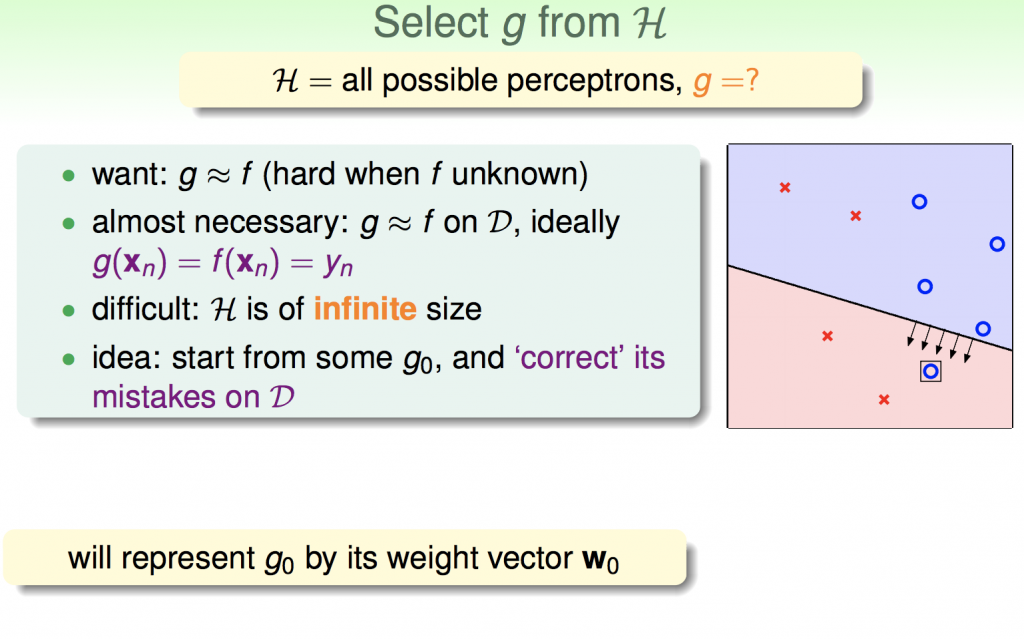
下面這張圖告訴我們如何對錯誤做修正,假設今天有一個點分類錯誤,實際上我們提供的資料結果是要核發信用卡,但是分類結果卻是不核發信用卡,也就是我們實際上x結果與w出來結果的夾角太大,我們可以透過向量加減來修正它,直到不再犯錯為止(圖片中t代表第幾次修正)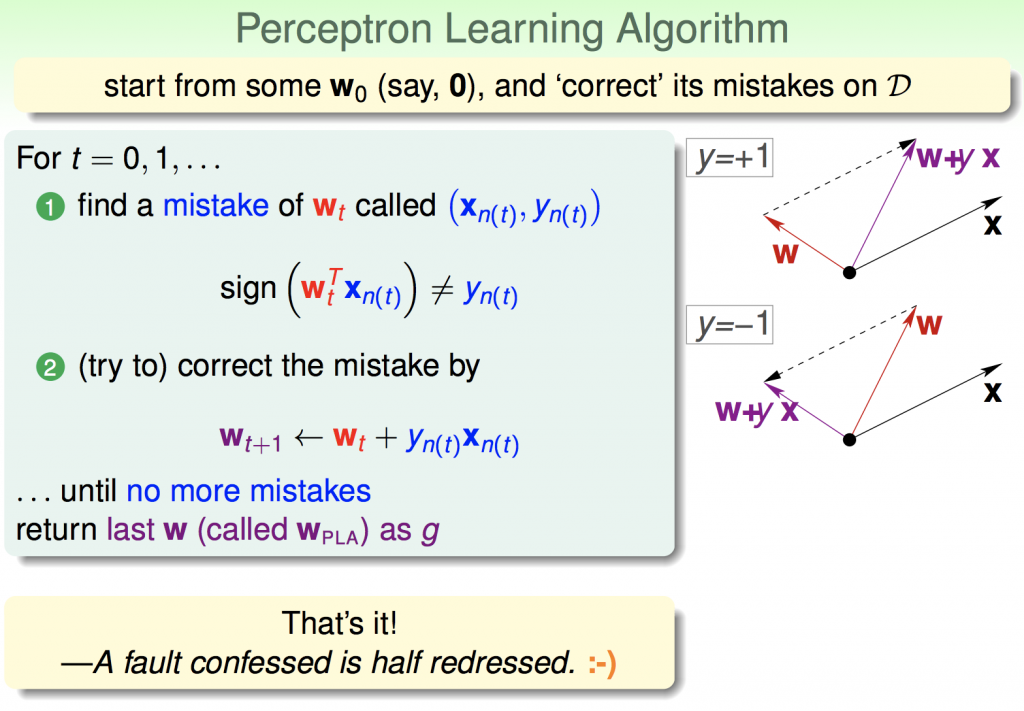
鳶尾花數據實作感知器模型
import numpy as np
import pandas as pd
import matplotlib.pyplot as plt
class Perceptron:
def __init__(self, eta=0.01, n_iter=10):
self.eta = eta
self.n_iter = n_iter
def fit(self, X, y):
self.w = np.zeros(1 + X.shape[1])
self.errors = []
for _ in range(self.n_iter):
error = 0
for xi, target in zip(X, y):
update = self.eta * (target - self.predict(xi))
self.w[1:] += update * xi
self.w[0] += update
error += int(update != 0.0)
self.errors.append(error)
return self
def net_input(self, X):
return np.dot(X, self.w[1:]) + self.w[0]
def predict(self, X):
return np.where(self.net_input(X) >= 0.0, 1, -1)
def main():
df = pd.read_csv('https://archive.ics.uci.edu/ml/machine-learning-databases/iris/iris.data', header=None)
X = df.iloc[0:100, [0, 2]].values
y = df.iloc[0:100, 4].values
y = np.where(y == 'Iris-setosa', -1, 1)
plt.scatter(X[:50, 0], X[:50, 1], color='red', marker='o', label='setosa')
plt.scatter(
X[50:100, 0],
X[50:100, 1],
color='blue',
marker='x',
label='versicolor')
plt.xlabel('petal length')
plt.ylabel('sepal length')
plt.legend(loc='upper left')
plt.show()
if __name__ == '__main__':
main()
